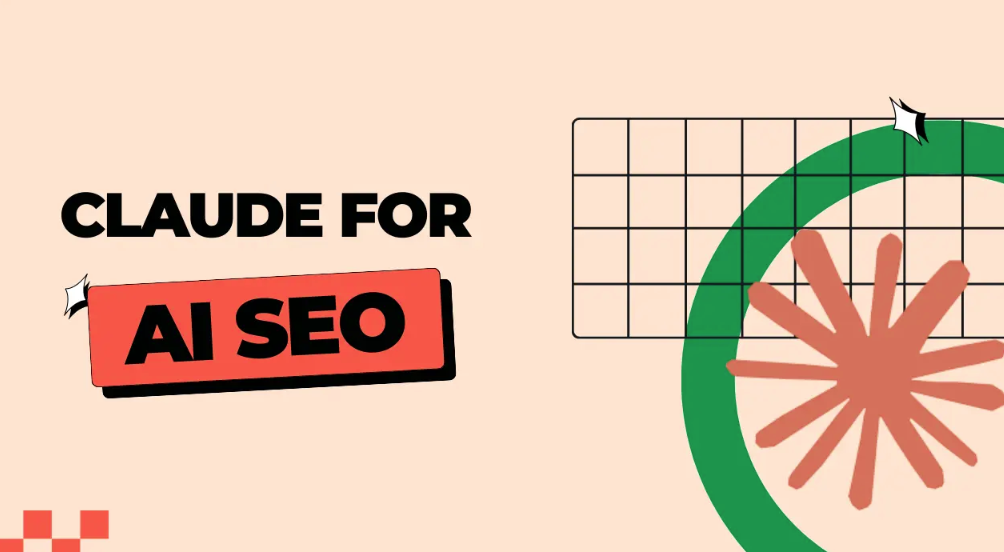Introduction
In the fast-paced world of digital marketing, blogging remains one of the most powerful tools for driving organic traffic, building authority, and engaging audiences. But with rising competition and ever-changing SEO algorithms, bloggers are turning to AI writing assistants to streamline their content strategy—enter Claude AI, a next-generation tool designed by Anthropic for clarity, ethical reasoning, and structured output.
Unlike many AI tools that prioritize flashy content over substance, Claude is built for purpose-driven, SEO-friendly writing. It helps bloggers generate well-structured articles, integrate keywords naturally, and maintain a consistent tone—without sacrificing readability or originality.
This article explores how Claude AI is transforming the blogging workflow—from writing optimized content and generating meta descriptions to handling FAQs, summaries, and repurposed posts. Whether you’re a solo creator or part of a larger content team, Claude can help you create smarter, faster, and more trustworthy blog content in 2025 and beyond.
Why Claude AI Is Ideal for Bloggers
In the fast-paced world of content marketing and blogging, Claude AI has emerged as a powerful tool for writers seeking clarity, consistency, and SEO-optimized content—without sacrificing ethical writing standards. Developed by Anthropic, Claude is built on a foundation known as Constitutional AI, which emphasizes responsible outputs, factual accuracy, and alignment with user intent. These qualities make it particularly well-suited for long-form blog writing across niches like technology, education, finance, health, and lifestyle.
Unlike many other AI writing assistants that may favor flashy creativity or filler-rich content, Claude AI focuses on structure and substance. It generates clear introductions, logically sequenced body sections, and strong conclusions—key elements for blog posts that not only rank well on Google but also offer real value to readers. Its ability to maintain tone and coherence throughout a piece makes it an excellent choice for content teams who want to scale blog production without sacrificing quality.
Another reason Claude is ideal for bloggers is its reliability and safety. It’s designed to reduce hallucinations (false or made-up information), making it more trustworthy for topics requiring accuracy—like legal, medical, or educational content. Moreover, its minimal bias output ensures that your blog remains inclusive, ethical, and brand-safe.
Whether you’re a solo content creator or part of a larger editorial team, Claude AI helps streamline the content process, allowing you to generate polished, SEO-ready blog posts efficiently while staying true to your audience’s expectations.
SEO Fundamentals and Claude’s Role
To succeed in blogging today, writing high-quality content isn’t enough—you also need to optimize it for search engines. This involves understanding the core principles of SEO (Search Engine Optimization): using relevant keywords, creating structured content with proper headings, writing engaging Meta descriptions, and improving readability. This is where Claude AI proves to be a valuable assistant.
Claude excels at generating SEO-friendly content that balances keyword usage with natural language. By feeding it prompts that include focus keywords, Claude can embed them organically throughout the blog post, avoiding the pitfalls of keyword stuffing. It also helps structure posts effectively using H1, H2, and H3 subheadings, making your content easier for both readers and search engines to digest.
One of Claude’s standout features is its ability to generate compelling Meta titles and descriptions, a key component of on-page SEO. With the right prompts, Claude can craft summaries that not only reflect the content accurately but also entice users to click—boosting your CTR (click-through rate) in search results.
Additionally, Claude supports internal linking strategies by suggesting how different sections of a blog can connect to other relevant articles or product pages. This improves your site’s navigation and helps distribute SEO authority across pages.
Claude doesn’t replace SEO tools like Ahrefs or SEMrush, but it works in harmony with them—taking your keyword data and turning it into clear, optimized, human-readable content. By automating the heavy lifting of SEO-focused writing, Claude allows bloggers to concentrate on creativity, strategy, and user engagement.
Using Claude for Keyword-Driven Blog Posts
Creating effective blog content starts with choosing the right keywords, but the real magic lies in how those keywords are used. With Claude AI, bloggers can generate keyword-optimized blog posts that flow naturally, rank well, and offer real value to readers.
To get the best results from Claude, the prompt must include the primary keyword and, if possible, several long-tail variations. For example, if you’re targeting “best budget travel destinations,” your prompt should ask Claude to include variations like “cheap places to travel,” “affordable countries to visit,” and “budget-friendly vacation spots.” Claude then uses these organically, maintaining readability and tone.
Claude also supports semantic SEO, meaning it can understand related terms and naturally weave them into the content. This makes the post more comprehensive and increases its chances of ranking for multiple related search terms.
A sample prompt might look like this:
“Write a 1,000-word blog post on the best budget travel destinations in 2025. Use keywords like ‘cheap places to travel,’ ‘budget vacation ideas,’ and ‘affordable holiday spots.’ Structure the blog with an introduction, subheadings, and a conclusion. Keep the tone friendly and informative.”
The result is a well-organized post with strategic keyword placement—no stuffing, no awkward phrasing.
Claude also helps in reusing keyword data for different post types, such as turning a listicle into a how-to guide, or expanding a blog into a downloadable resource.
In short, Claude AI transforms your keyword research into fully fleshed-out, SEO-rich blog content, saving time and improving consistency across your website.
Real-World Blogging Tasks Powered by Claude AI
Claude AI isn’t just good at writing blog posts—it’s a multi-tasking assistant that helps bloggers handle a wide range of content creation needs, from ideation to optimization. Its ability to generate structured, well-written, and SEO-conscious output makes it a reliable tool for daily blogging operations.
1. Writing Blog Introductions and Conclusions
Crafting engaging intros and impactful conclusions can be time-consuming. Claude AI can instantly generate hook-based introductions and wrap-ups that summarize key takeaways, improve engagement, and include target keywords naturally.
2. Expanding Blog Outlines into Full Articles
Many bloggers start with an outline and struggle to develop full content. Claude can take a basic structure (like H2 headings) and expand each point into informative paragraphs, ensuring logical flow and topic depth.
3. Generating FAQs and Summaries
Claude is excellent at writing frequently asked questions and TL;DR summaries. These boost SEO by targeting snippet positions in search engines and help readers quickly digest key points.
4. Repurposing Existing Content
Claude can rephrase or restructure past posts into new formats—turning a blog post into a social media thread, a listicle into a how-to guide, or a text article into email newsletter content.
5. Creating Call-to-Actions (CTAs) and Meta Descriptions
With the right prompt, Claude can generate click-worthy CTAs and search-optimized meta descriptions, enhancing user engagement and SERP visibility.
In short, Claude AI supports the entire content workflow—not just writing full posts, but automating the small, repetitive tasks that often drain time and creativity.
Benefits of Using Claude for SEO Blogging
Using Claude AI for blogging offers a wide range of advantages, particularly for content creators focused on producing SEO-friendly, high-quality, and ethically aligned content. Unlike many generic AI writing tools, Claude is built to support clarity, consistency, and safety, making it an ideal solution for both solo bloggers and editorial teams.
1. Improved Writing Efficiency
Claude significantly reduces the time it takes to produce long-form blog content. With the right prompt, it can generate well-structured articles in minutes, allowing bloggers to scale content creation without compromising quality.
2. SEO Optimization Made Easy
Claude integrates keywords naturally and follows best practices for headings, Meta descriptions, and content hierarchy. This helps improve your blog’s chances of ranking higher in search engines while keeping the content readable and valuable.
3. Consistency Across Posts
Claude maintains a uniform tone, style, and structure, which is crucial for brand voice and user experience—especially for blogs managed by teams or agencies serving multiple clients.
4. Reduced Risk of Google Penalties
Because Claude avoids keyword stuffing and low-quality filler content, it minimizes the chance of being penalized by Google’s algorithms. Its outputs are clean, purposeful, and focused on user intent.
5. Ethical and Inclusive Content
With its Constitutional AI foundation, Claude is designed to produce factually sound, unbiased, and brand-safe content, aligning well with today’s growing demand for ethical blogging.
In summary, Claude AI doesn’t just speed up the process—it enhances content strategy by combining SEO effectiveness with thoughtful, audience-friendly writing.
Limitations to Consider
While Claude AI is an exceptional tool for blogging and SEO-focused content creation, it’s not without its limitations. Understanding these helps bloggers and content teams use it more strategically and avoid common pitfalls in AI-assisted writing workflows.
1. No Real-Time Data or Search Trends
Claude AI doesn’t have access to live internet data or SEO platforms like Google Trends or Ahrefs. This means it can’t help you identify trending topics or high-volume keywords in real-time. You’ll still need to rely on separate SEO tools for keyword research and competitive analysis.
2. Limited Personalization and Brand Voice
Although Claude is great at maintaining consistent tone and structure, it may produce content that feels generic or overly formal unless carefully prompted. Bloggers aiming for a highly unique or humorous tone may find themselves needing to edit or rewrite sections to match their personal voice.
3. Requires Clear and Specific Prompts
Claude performs best when given detailed, structured prompts. Vague instructions can lead to flat, repetitive, or irrelevant content. This learning curve can initially slow down content creation, especially for those new to AI prompting.
4. Not a Substitute for Human Insight
Claude is designed to assist—not replace—human creativity. It can’t replicate personal experiences, emotional nuance, or deep subject matter expertise. Relying entirely on AI can result in content that lacks authenticity or depth.
Despite these challenges, Claude remains a highly effective tool when used alongside human creativity and SEO insights. The key is finding the right balance between automation and editorial control.
Future of AI in Blogging with Claude
As the blogging landscape becomes more competitive and content-heavy, the future of AI-powered writing—particularly with tools like Claude AI—is set to redefine how content is created, optimized, and scaled. Unlike many AI tools that focus solely on speed or quantity, Claude’s strength lies in quality, structure, and ethical alignment, making it uniquely positioned to support the next generation of bloggers and content marketers.
Looking ahead, we can expect Claude AI to become more integrated with blogging platforms and SEO tools, streamlining workflows from keyword research to publishing. Imagine prompting Claude directly from your WordPress editor or syncing it with SEMrush to auto-generate content based on current search demand. These innovations will allow for hyper-personalized, SEO-rich content creation at scale.

Moreover, as content regulations tighten and platforms crack down on misinformation and low-quality AI content, Claude’s safe, constitutionally-aligned design will stand out. Brands and publishers will increasingly prefer tools that produce fact-checked, inclusive, and brand-safe content, which is exactly where Claude excels.
There’s also growing potential in voice adaptation and cross-platform repurposing, where Claude could automatically convert blog posts into email campaigns, social media threads, or video scripts—all while preserving tone and SEO value.
Ultimately, Claude is more than a writing tool—it’s a strategic partner in building ethical, scalable, and search-optimized blogs. As AI continues to evolve, bloggers who embrace tools like Claude will be better equipped to produce smarter, safer, and more impactful content in an AI-driven digital landscape.
Conclusion
As blogging continues to evolve in the digital age, Claude AI offers a reliable, efficient, and ethical solution for creating SEO-optimized content. From structuring keyword-rich articles to generating compelling meta descriptions and FAQs, Claude helps bloggers streamline their workflow while maintaining quality and clarity.
What sets Claude apart is its focus on safe, structured, and brand-aligned writing, making it ideal for professionals, content teams, and solo bloggers alike. While it isn’t a replacement for human creativity or SEO analysis tools, it’s a powerful partner in enhancing content production and maintaining consistency.
Looking forward, Claude is well-positioned to support the future of AI-assisted blogging—offering scalable content generation without compromising authenticity or search performance. By combining Claude’s capabilities with human insight, bloggers can produce smarter, faster, and more trustworthy content in 2025 and beyond.



